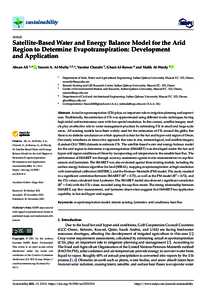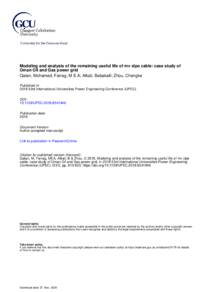وثيقة
Satellite-based water and energy balance model for the arid region to determine evapotranspiration : development and application.
المعرف
DOI: 10.3390/su132313111
المصدر
Sustainability (Switzerland). v. 13, 23, 13111
المساهمون
الدولة
Switzerland
الناشر
MDPI.
ميلادي
2021-12-01
اللغة
الأنجليزية
الملخص الإنجليزي
Actual evapotranspiration (ETa) plays an important role in irrigation planning and supervi-sion. Traditionally, the estimation of ETa was approximated using different in situ techniques, having high initial and maintenance costs with low spatial resolution. In this context, satellite imagery models play an effective role in water management practices by estimating ETa in small and large-scale areas. All existing models have been widely used for the estimation of ETa around the globe, but there is no definite conclusion on which approach is best for the hot and hyper-arid region of Oman. Our study introduces an innovative approach that uses in situ, meteorological, and satellite imagery (Landsat-OLI/TIRS) datasets to estimate ETa. The satellite-based water and energy balance model for the arid region to determine evapotranspiration (SMARET) was developed under the hot and hyper-arid region conditions of Oman by incorporating soil temperature in the sensible heat flux. The performance of SMARET ran through accuracy assessment against in situ measurements via sap flow sensors and lysimeters. The SMARET was also evaluated against three existing models, including the surface energy balance algorithm for land (SEBAL), mapping evapotranspiration at high-resolution with internalized calibration (METRIC), and the Penman–Monteith (PM) model. The study resulted in a significant correlation between SMARET (R2 = 0.73), as well as the PM model (R2 = 0.72), and the ETa values calculated from Lysimeter. The SMARET model also showed a significant correlation (R2 = 0.66) with the ETa values recorded using the sap flow meter. The strong relationship between SMARET, sap flow measurement, and lysimeter observation suggests that SMARET has application capability in hot and hyper-arid regions.
ISSN
2071-1050
URL المصدر
قالب العنصر
مقالات الدوريات


